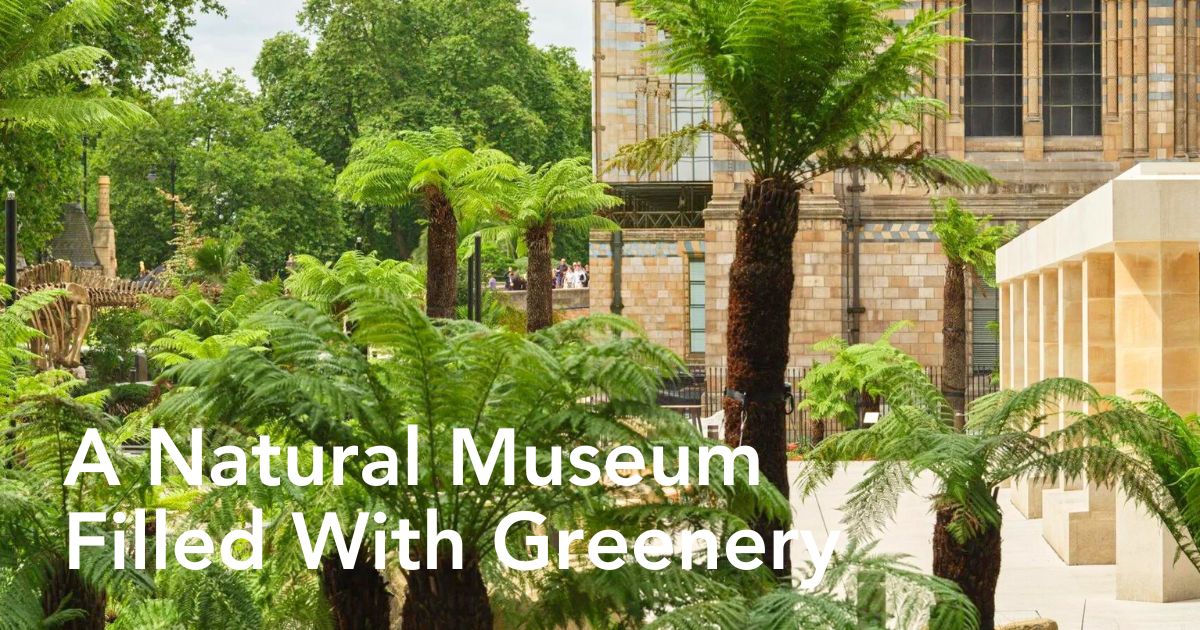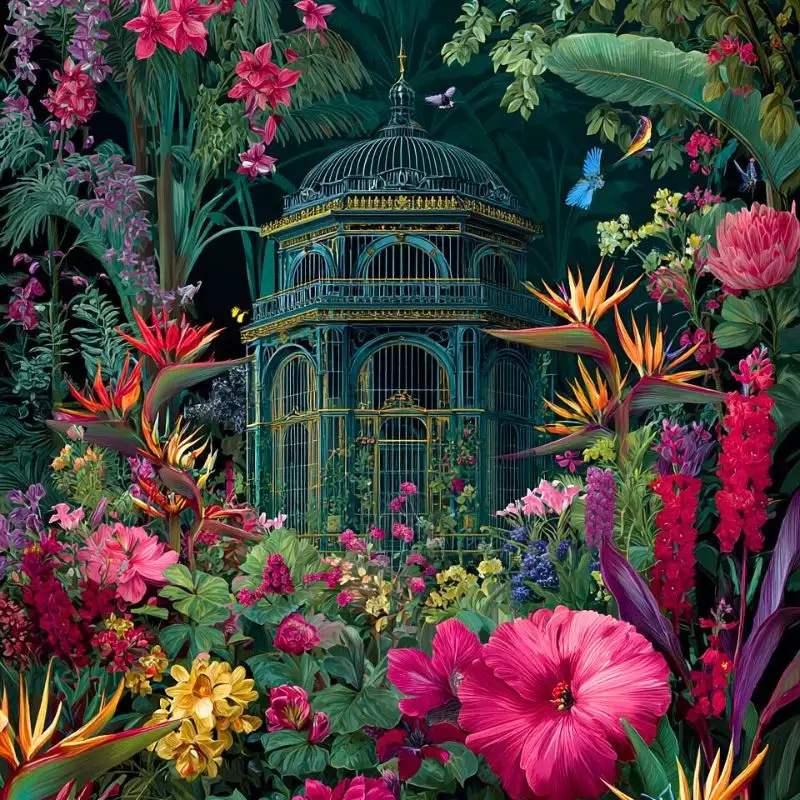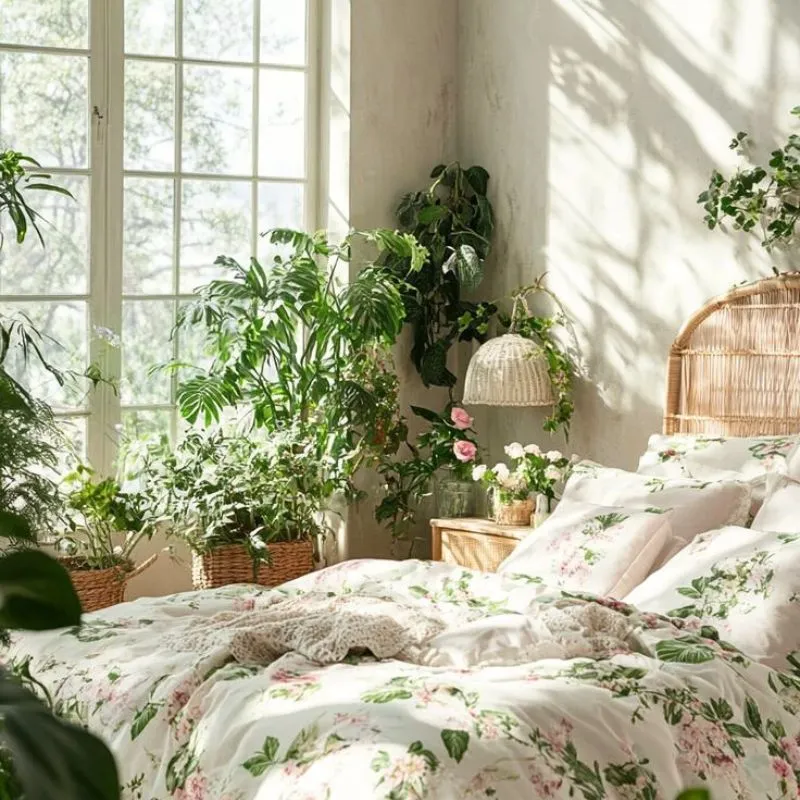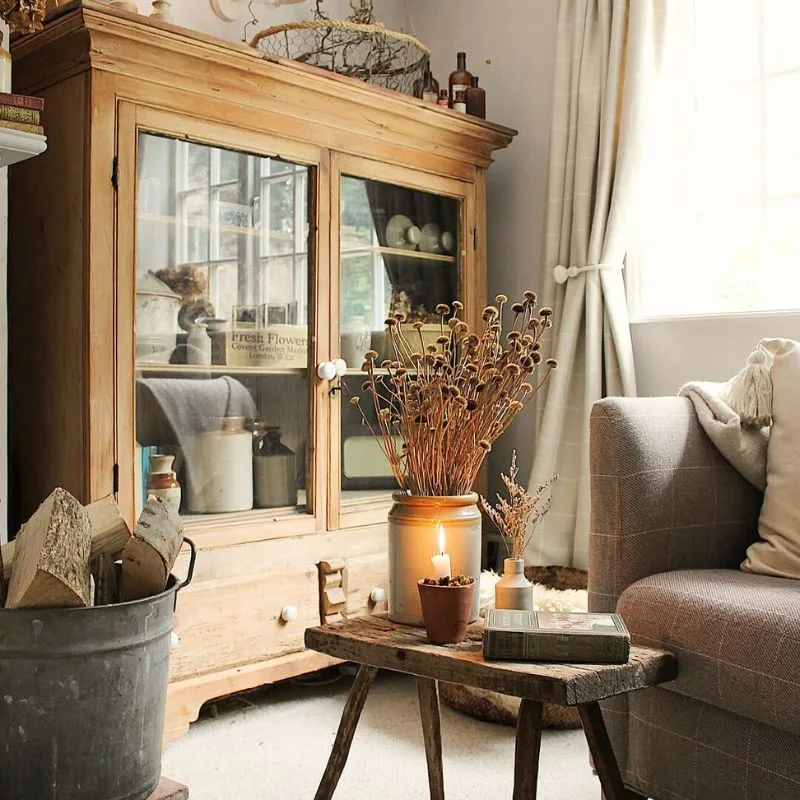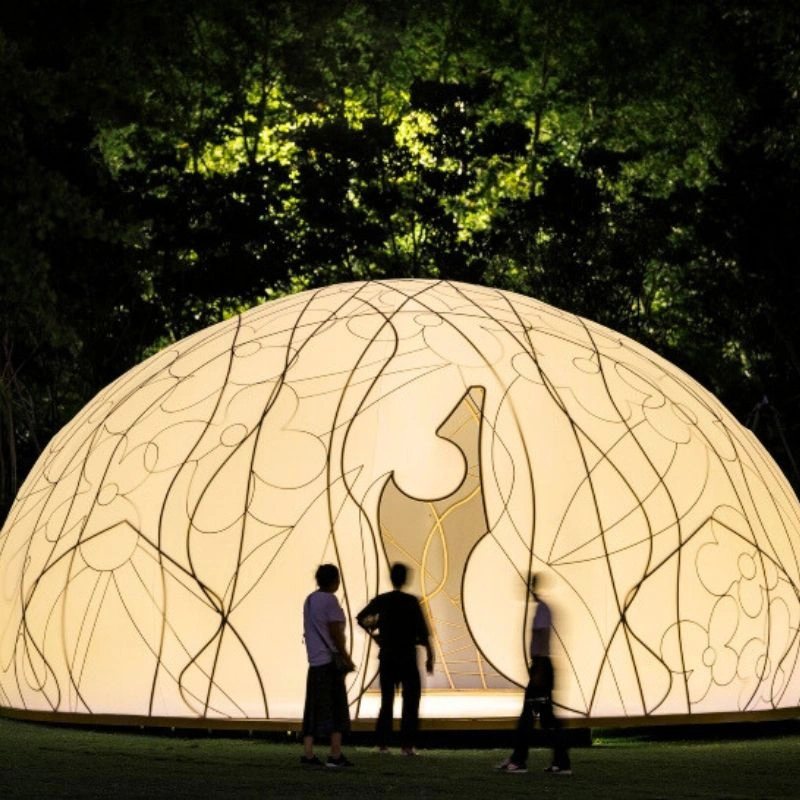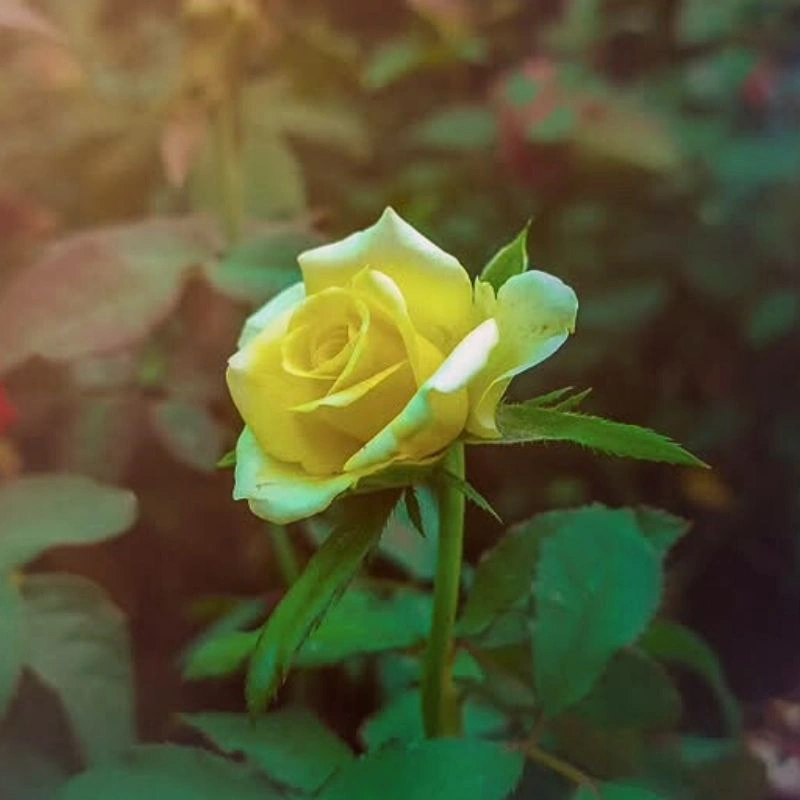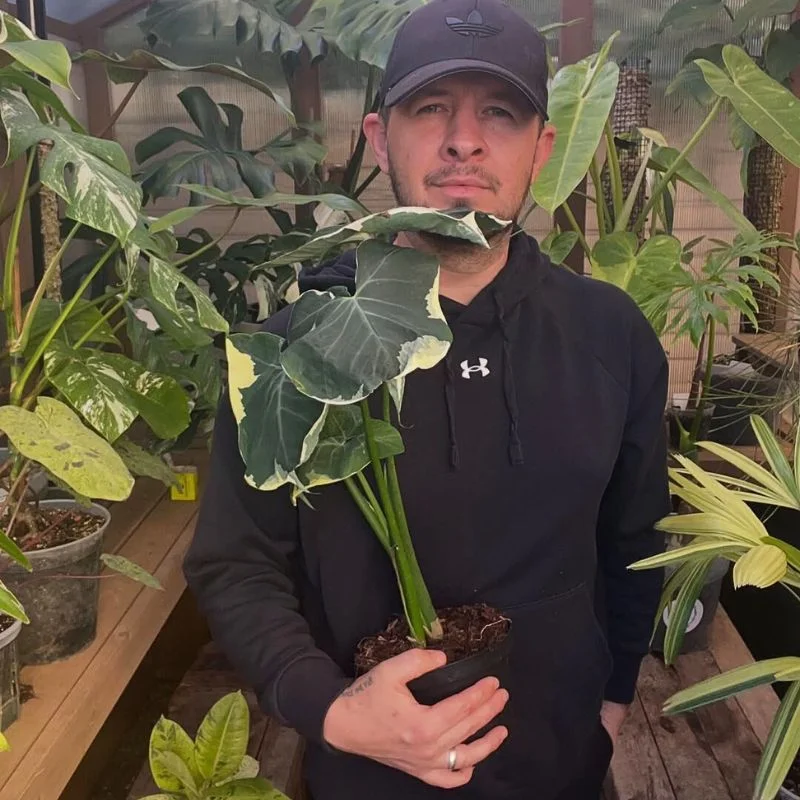Planted landscapes surround a pair of timber-framed buildings in London's Natural History Museum gardens, renovated by local studios Feilden Fowles and J&L Gibbons. For the first time in the museum's 140-year history, the gardens have been renovated and divided into zones with planting and signage designed to tell the story of life on Earth.
A Project by Feilden Fowles Made to Boost Biodiversity
According to Feilden Fowles and J&L Gibbons, the project's goal is to increase biodiversity in the urban landscape while also maximizing garden accessibility, all while remaining sensitive to the architecture of Alfred Waterhouse's Grade I-listed museum. The team also planned to implement a variety of nature-based learning and research facilities, allowing children, scientists, and volunteers to observe the gardens.
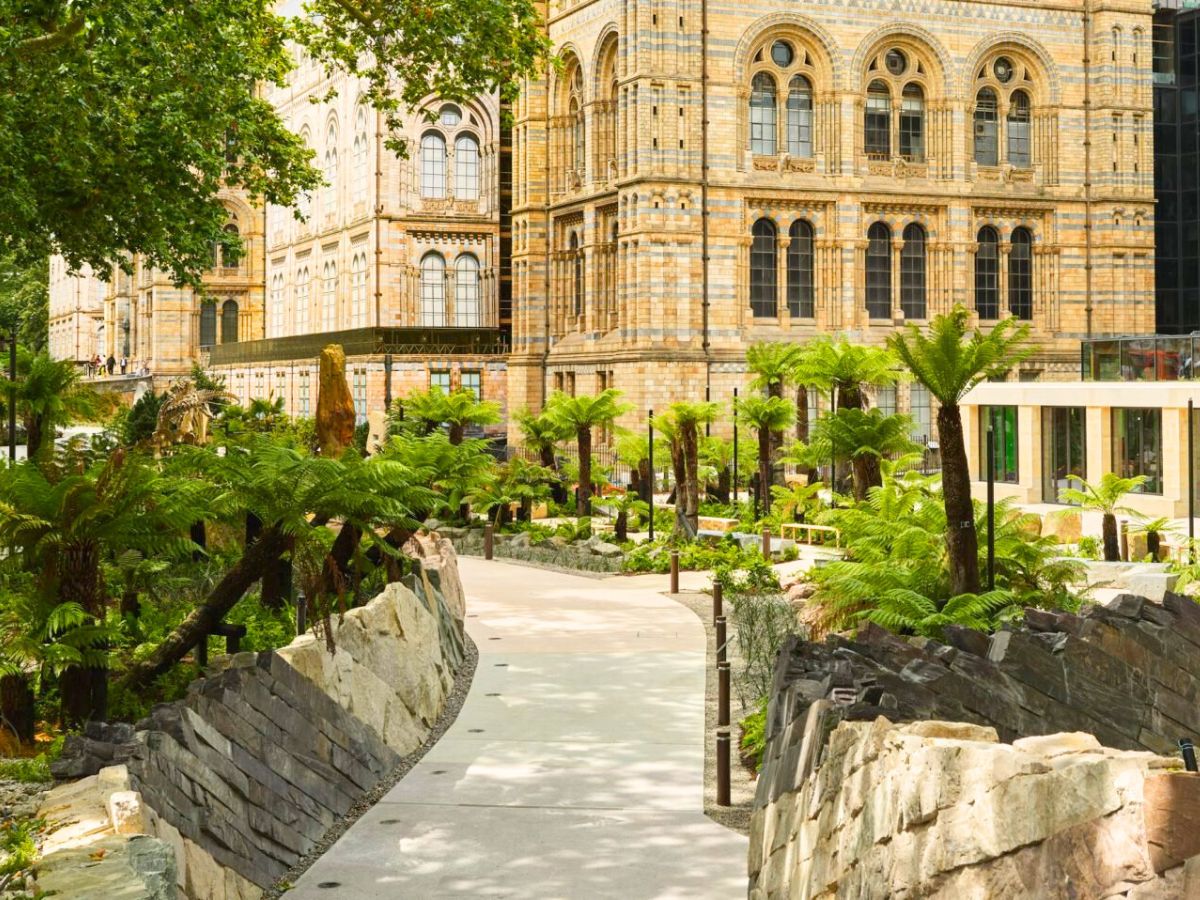
Edmund Fowles, the architect, said that respecting the heritage of the museum's iconic Grade I-listed building, designed by Alfred Waterhouse and dubbed a 'cathedral to nature', was a core guiding principle. Waterhouse's famous facade shows detailed decoration of flora and fauna, with extinct species on the east wing and extant, or surviving, nature on the west. The garden design beautifully reflects this idea and much more!
A Living Laboratory Design Brought to Life
The studios' design forms part of the Natural History Museum's Urban Nature Project, which is focused on protecting nature in urban areas that are becoming increasingly threatened by climate change and urbanization. As part of this project, the gardens have been transformed into an accessible green space that will be a green eco-space for people and wildlife and a living laboratory that will make the gardens one of the world's most intensively studied sites.
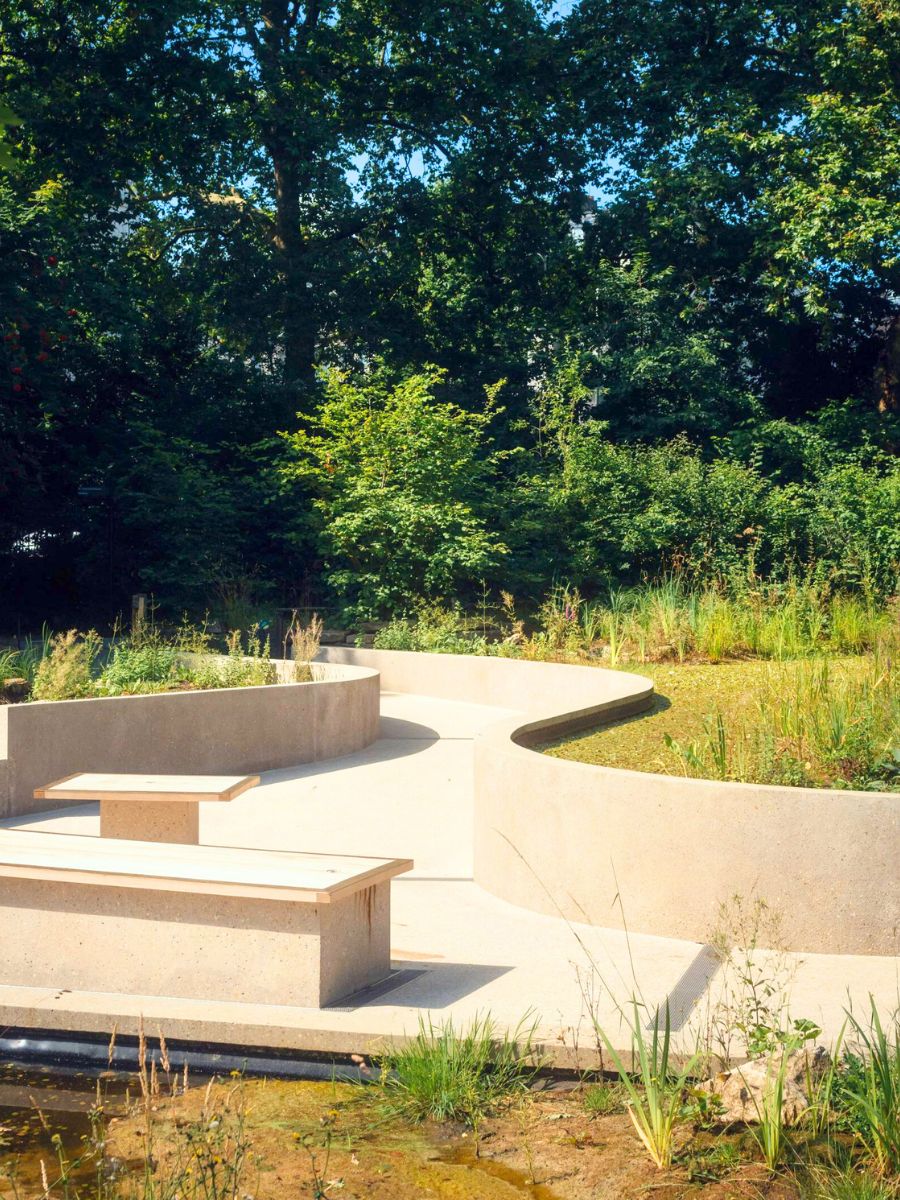
The landscape is divided into four sections: the Evolution Garden, the Nature Activity Center, the Nature Discovery Garden, and the Garden Kitchen. According to Feilden Fowles, the Evolution Garden was planted with greenery that tells the story of deep time, which spans geological history from the Cambrian period (540 million years ago) to the present.
This serves as a backdrop for the Garden Kitchen, which is located beneath the undercroft of the museum's modernist Palaeontology Building. Although it has yet to be officially opened, it includes kitchens, storage, bathrooms, a function room, and a plant room. The linear 660-square-meter structure is made of limestone and timber and draws inspiration from Victorian structures like orangeries and palm houses.
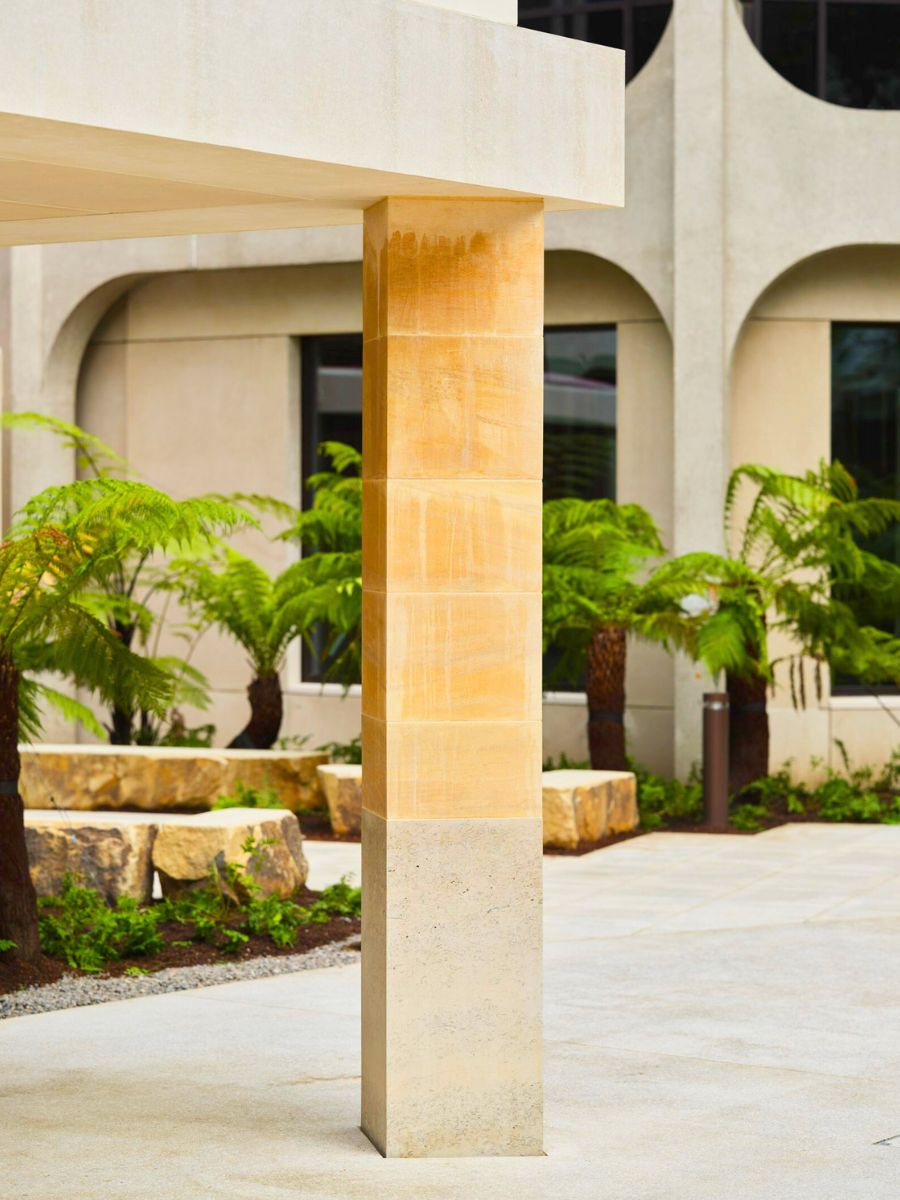
Meanwhile, the Nature Discovery Garden to the west of the site is landscaped to depict various natural habitats in the UK. It was intended to cause as little disruption as possible to an existing wildlife garden on the same plot. This garden also houses the 220-square-meter Nature Activity Center and serves as a gateway to the museum's new northwest entrance.
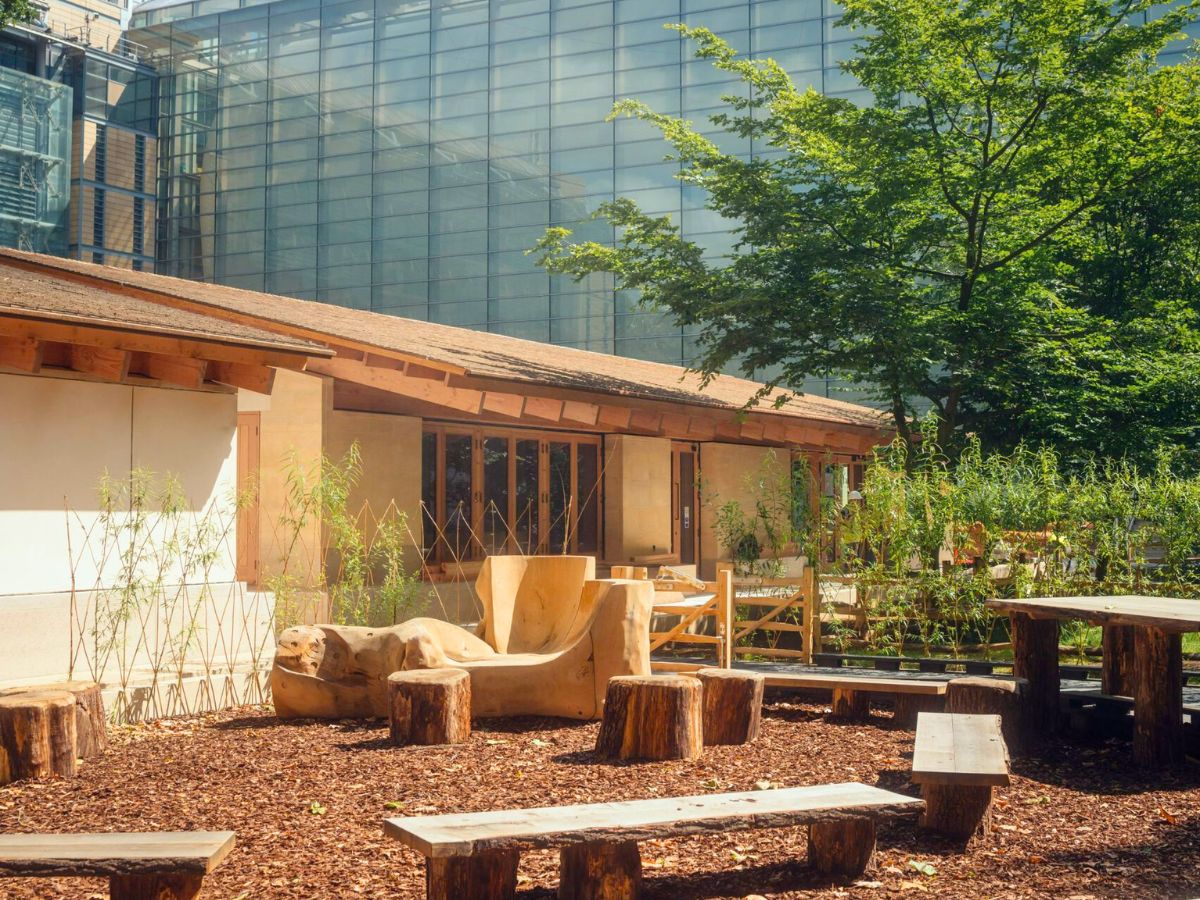
Meet the Nature Activity Center in the Natural History Museum Gardens
The Nature Activity Center, like the Garden Kitchen, is a linear structure made of timber and stone. It is crowned by a timber overhanging roof that houses a rainwater collection system. The structure separates areas with protected tree roots and houses a variety of facilities for scientific research and monitoring, garden maintenance, and education.
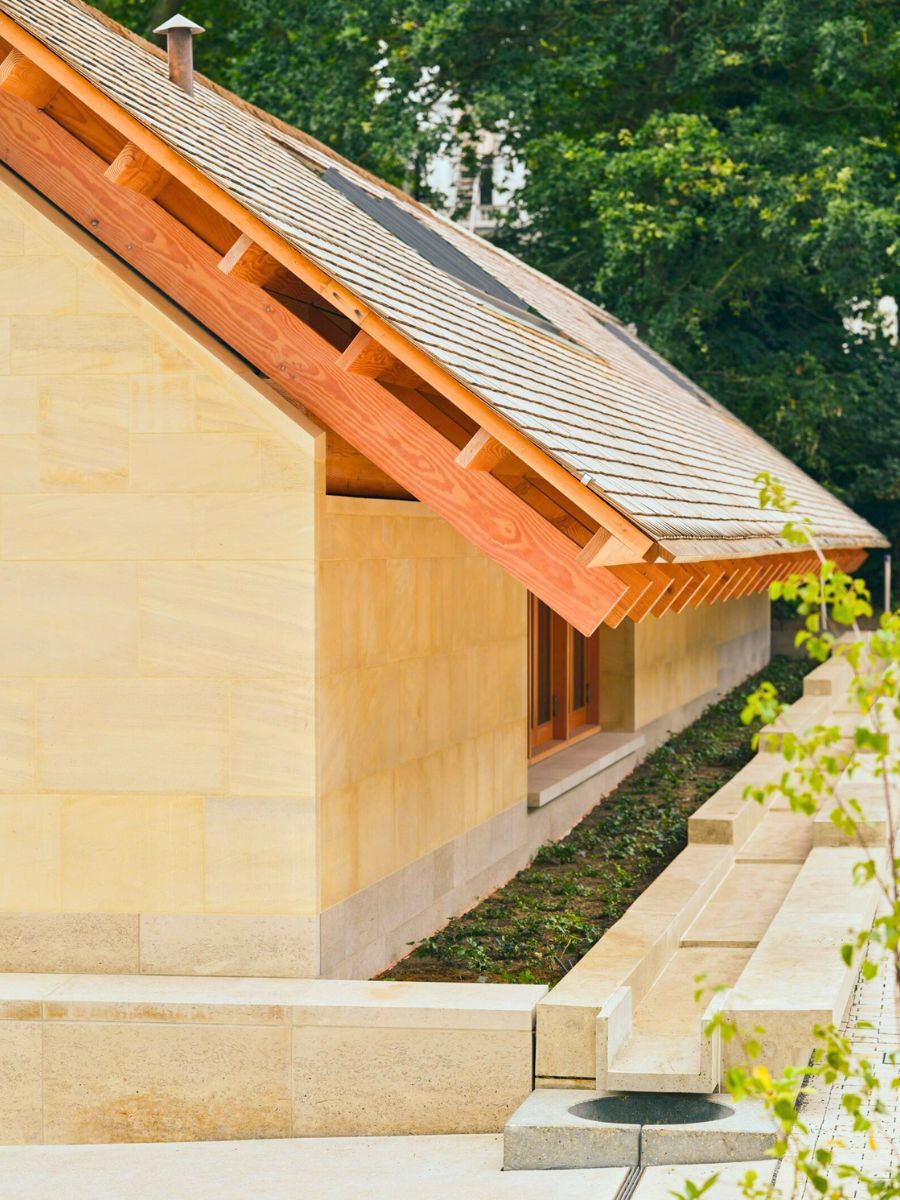
According to Feilden Fowles, the two buildings have a similar aesthetic that helps unify them across the site, and their heights correspond to the datums of the Waterhouse-designed museum. The two buildings were conceived as brother and sister, sharing details such as their linear plans, expressed corner entrances, layered, load-bearing stone facades, and timber-framed roofs.
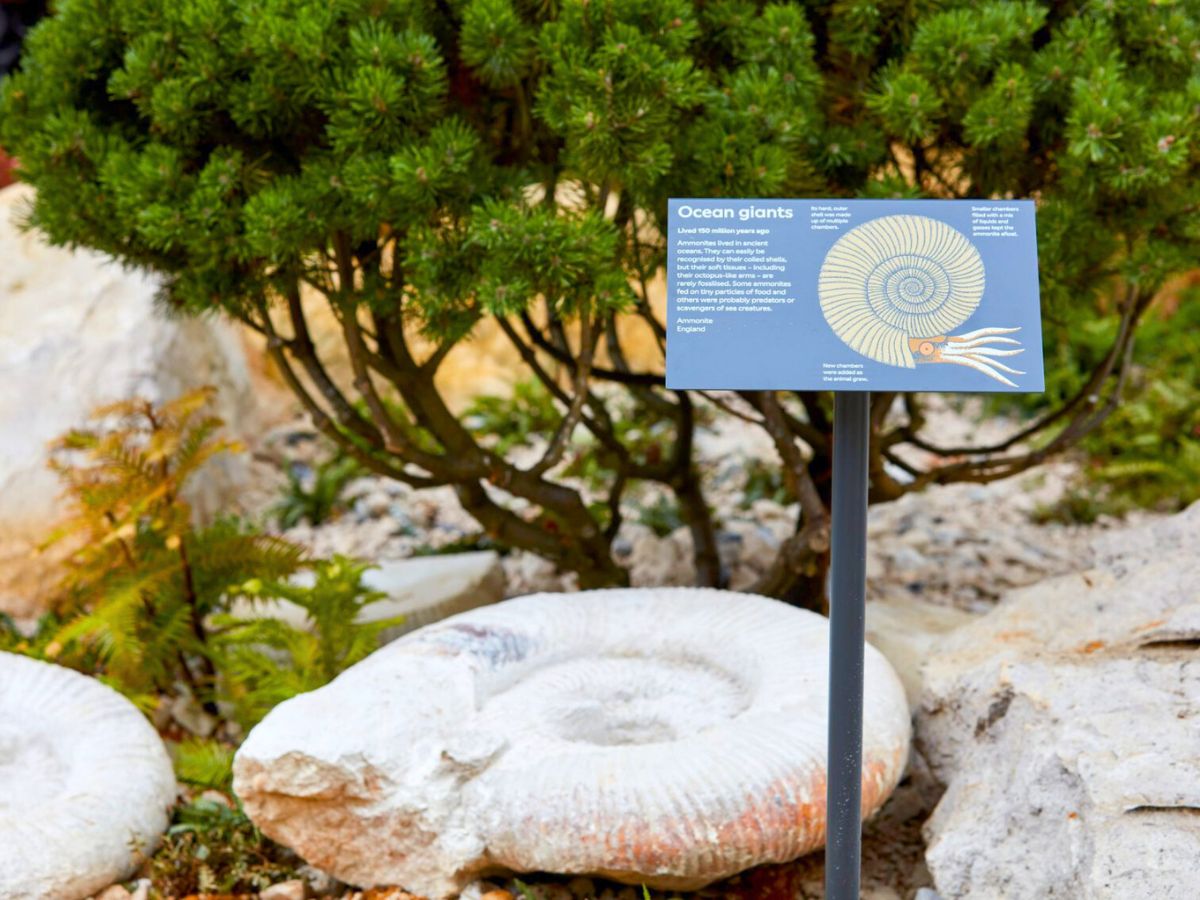
Completing the gardens are decorative brass inlays in the pathways and bronze letters quoting natural historian David Attenborough. Benches that evoke different geological eras are also dotted throughout the landscape, formed of materials including chalk and flint, alongside a life-size bronze cast of a dinosaur skeleton called Fern, a replica based on the Diplodocus skeleton that had been on display in the Natural History Museum from 1905 until 2016.
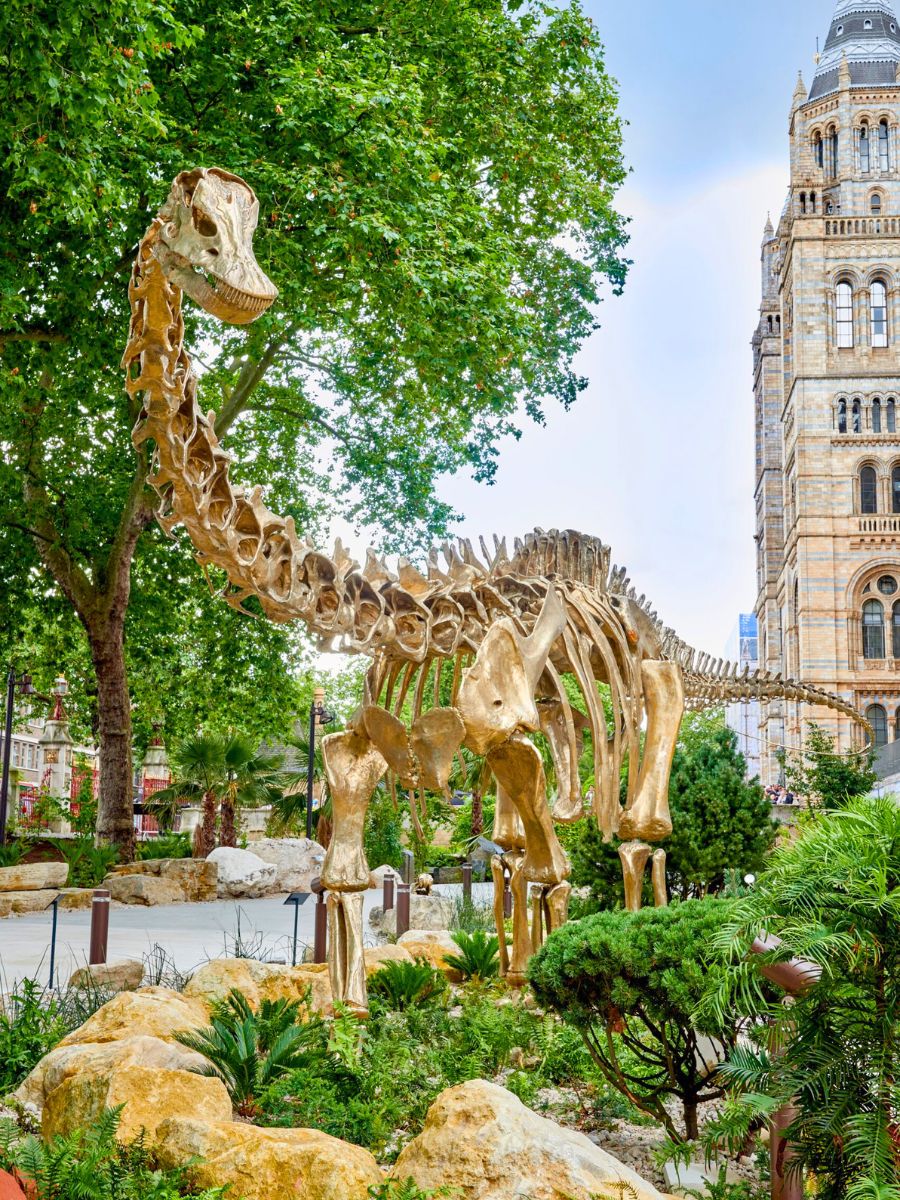
A favorite feature is the sunken pathway within the ponds. The team made this space to provide accessible opportunities for everyone of all ages to engage with the rich diversity of flora and fauna in the water, to participate in learning activities such as pond dipping, and to be connected to the wetland habitats which is a rare opportunity in a central London location.
More About the Living Laboratories Features
Less visible garden features include an underground web of scientific monitoring points that allow the museum's scientists to observe the landscape and understand how nature changes in urban areas. The network of sensors that have been sensitively incorporated into the design will gather audio and environmental data from across the gardens and will help the museum's scientists to understand and support UK urban nature recovery.
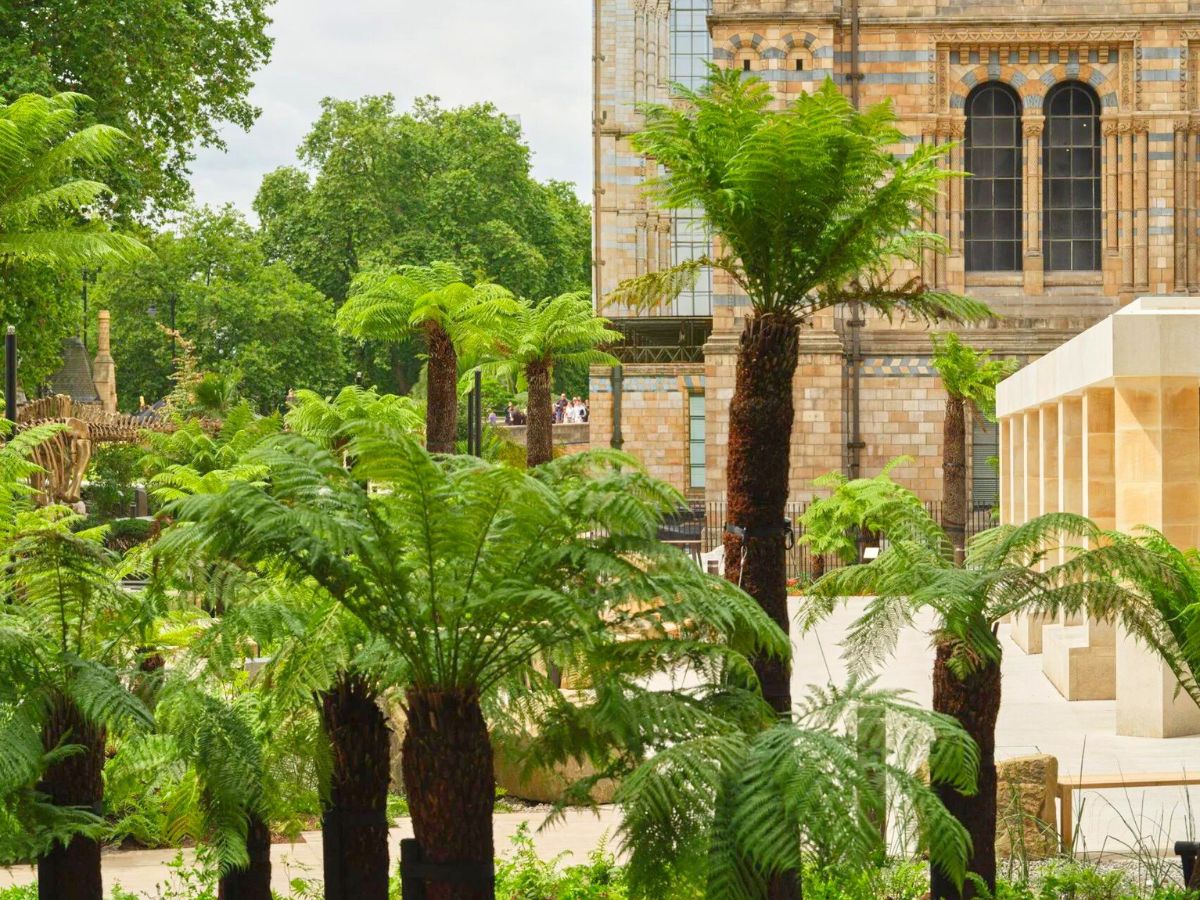
To reduce the carbon footprint of the project, locally sourced materials have been used where possible. Passive design principles help cool and warm the buildings in tandem with air-source heat pumps.
Every day new projects are impressing worldwide and most importantly, people are seeing how and why plants are necessary for spaces. Green spaces are good for you!
Photos by Kendal Noctor.

